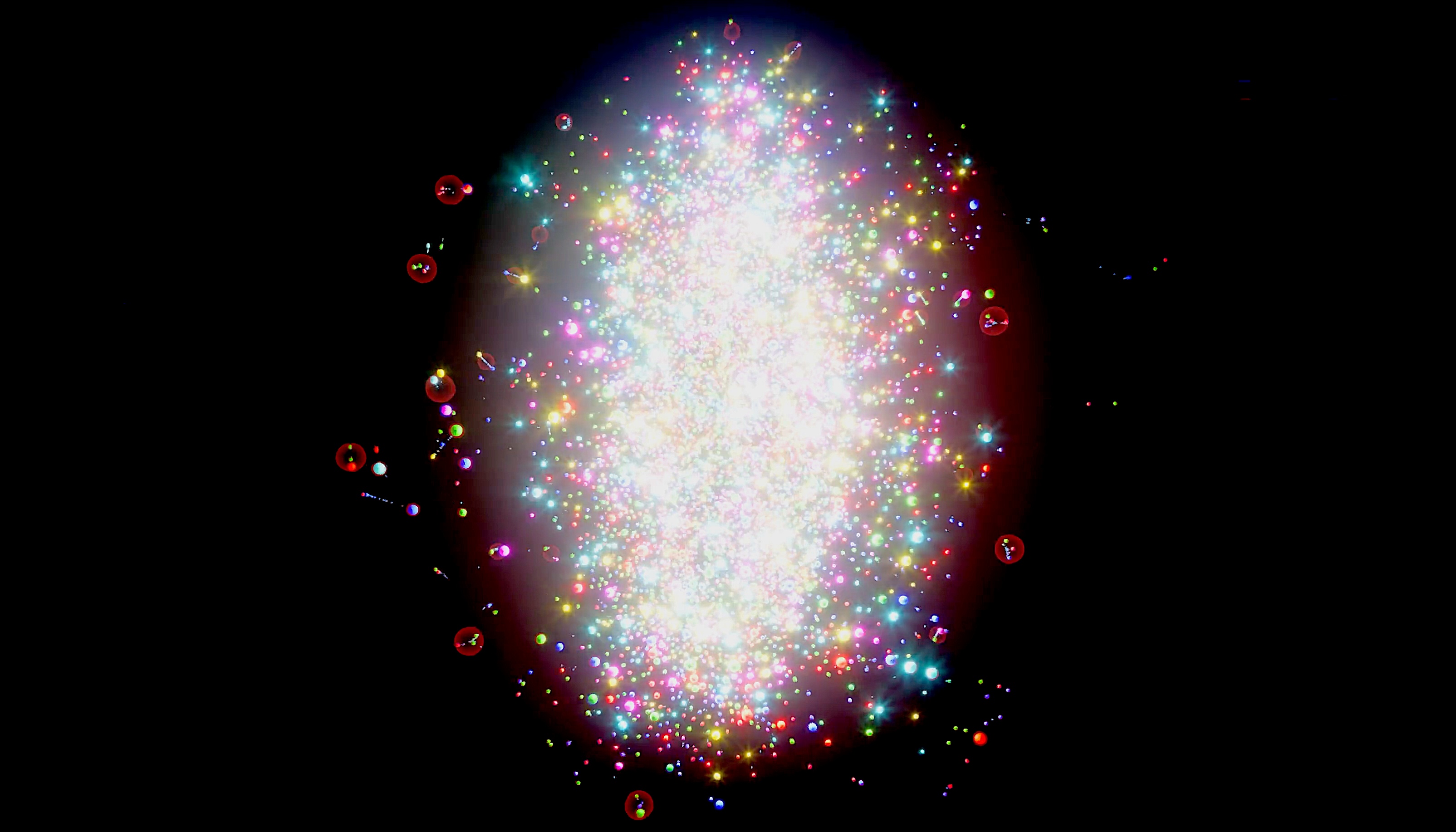ATLAS observes top quarks in lead-lead collisions
12 November 2024 | By
The ATLAS Collaboration at CERN has observed top-quark pair production in lead-lead ion collisions, marking the first observation of this process in nucleus-nucleus interactions. This result represents a significant step forward in heavy-ion physics, paving the way for new measurements of the quark-gluon plasma and delivering fresh insights into the nature of the strong force.
One of the remarkable capabilities of the Large Hadron Collider (LHC) is its ability to collide heavy ions to create an exotic state of matter called the quark-gluon plasma (QGP). In this state, quarks and gluons – the fundamental components of protons and neutrons – are not bound within particles, but instead exist in a “deconfined” state. Scientists believe the QGP filled the universe briefly after the Big Bang, and its study offers a glimpse into the conditions of the early cosmos.
However, the QGP’s extremely short lifetime – around 10−23 seconds – means it cannot be observed directly. Instead, physicists study particles produced in heavy-ion collisions that pass through the QGP, using them as probes of the plasma’s properties. The top quark, in particular, is a very promising probe of the QGP’s evolution over time. As the heaviest known elementary particle, the top quark decays very quickly – often before the QGP is even fully formed! The delay between the collision and the top-quark’s decay products interacting with the QGP could serve as a “time marker”, offering a unique opportunity to study the plasma’s temporal dynamics. Additionally, physicists could set new constraints on the nuclear parton distribution functions (nPDFs), which describe how a nucleon’s (proton or neutron) momentum is distributed among its constituent quarks and gluons. A broader programme to use top quarks to constrain the nPDFs is underway using first measurements of top quarks in proton-lead collisions; new measurements in lead-lead collisions may provide further input. But first, researchers had to confirm whether top quarks actually are produced in nucleus-nucleus collisions!
This observation paves the way for new measurements of an exotic state of matter called the "quark-gluon plasma".

In their new result, ATLAS physicists studied collisions of lead ions at a centre-of-mass energy of 5.02 TeV per nucleon pair. They observed top-quark production in the “dilepton channel”, where the top quarks decay into a b-quark and a W boson, which subsequently decays into either an electron or a muon and an associated neutrino. The result achieved a signal strength with a statistical significance of 5.03σ, exceeding the five standard deviation threshold. This is the first observation of top-quark-pair production in nucleus-nucleus collisions. The CMS Collaboration had previously reported evidence of this process.
The observation was made possible by ATLAS' precise lepton reconstruction capabilities, coupled with the high-statistics full Run 2 lead-lead dataset, data-driven estimations of background processes, new simulations of top-quark events and a dedicated jet calibration for this analysis using Z-boson events. Notably, the analysis does not rely on techniques that “tag” the particle jet originating from the b-quark. This opens the possibility for the analysis to be used for the notoriously difficult b-tagging calibration in the heavy-ion environment, aiding future top-quark measurements in nucleus-nucleus collisions.
ATLAS physicists measured the top-quark-pair production cross section with a relative uncertainty of 35%. The total uncertainty is primarily driven by the limited dataset size, meaning that new data from upcoming heavy-ion runs will enhance the precision. Researchers also compared their new measurement with modifications to PDFs (see Figure 1), as well as to the aforementioned CMS measurement and the ATLAS measurement in 5.02 TeV proton-proton collisions. The latter is scaled to lead-lead ion collisions. Good agreement was found across all measurements.
Today’s result opens a new window in the study of the quark-gluon plasma. In future studies, ATLAS scientists will focus on the semi-leptonic decay channel of top-quark pairs in heavy-ion collisions, allowing them the first glimpse at the time evolution of QGP.
Learn more
- Observation of top-quark pair production in lead-lead collisions at 5.02 TeV with the ATLAS detector (ATLAS-HION-2022-10)
- LHC TOP WG meeting 2024 presentation by Patrycja Potepa: ttbar production in heavy-ion collisions with the ATLAS and CMS detectors
- CMS Collaboration: Evidence for top quark production in nucleus-nucleus collisions (arXiv: 2006.11110)
- ATLAS observes top quarks in proton-lead collisions, ATLAS Physics Briefing, September 2023



